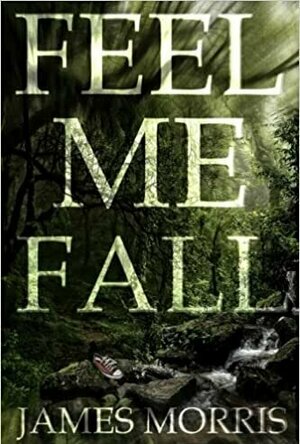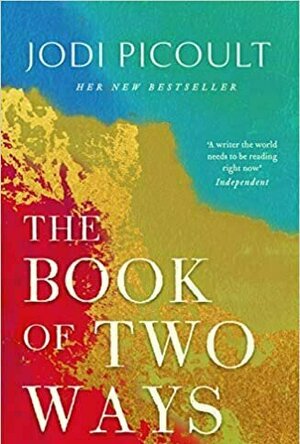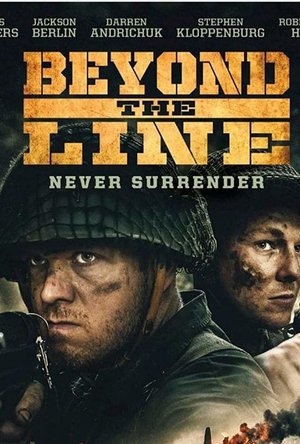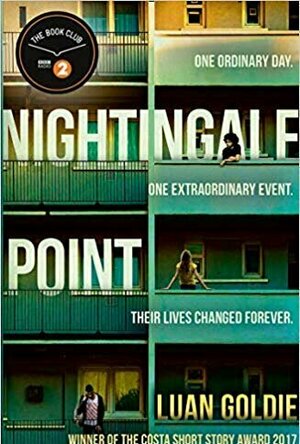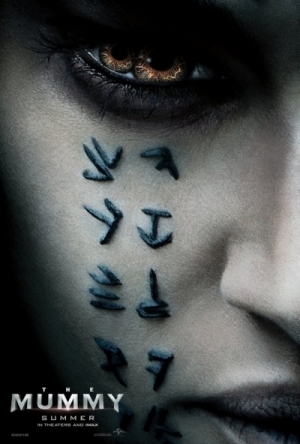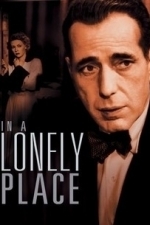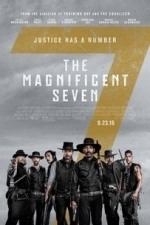Search
BookInspector (124 KP) rated Feel Me Fall in Books
Sep 24, 2020
More reviews at https://bbookinspector.wordpress.com
Sometimes I wonder, why great books like this one don’t get published, and you hardly will find it in the book stores, and other, average books, get published and sold everywhere… It is my little mystery, to which I do not have an answer
Three boys and three girls, magically survive a plane crash. Their main goal is to survive, to survive in Amazon, where danger is behind every tree. They need to work as a team to get back to civilisation, find food, shelter and overcome the past which follows them even in a middle of a jungle. Eventually, only Emily Duran is saved, so what happened to the rest of her friends? That was the question, which kept me glued to this book.
I absolutely loved the characters of this book, they all are teenagers who went to same school and are sharing some difficult relationships. I really enjoyed the different personalities of each and every character. All characters are incredibly complex, charismatic, realistic and very interesting personas. Everyone will have a great variety to choose from as their favourite. I really couldn’t pick one as my favourite, because they all had some great qualities, which left me baffled.
The narrative of this novel is told by moving between past and present. Emily is telling the story of what happened in Amazon, and she comes back to the present, to share how all this influenced her present life and relationships. I really enjoyed how Morris manipulated readers mind in this novel. When I started believing in some course of action, author threw in a turn or twist which changed everything, and left me guessing again. This book is not long, that’s why the action and pace had to keep happening in every chapter, and I am thankful that there was no unnecessary writing.
The writing style of this book is very pleasant, it is easy to read this novel, and it is very skillfully written. It is a survival novel, and people died in this book, and to be honest, it is quite graphic, so if you are sensitive and don’t like graphic death scenes, you might want to avoid this book. The chapters of this book were pleasantly designed, dividing the chapters into smaller sub-chapters, which didn’t leave me uninterested, and kept the suspense going. I was absolutely amused and shocked by the ending of this novel and I give nothing but applause to the author for it. I think that ending was absolutely fantastic!
I could carry on praising this book, but the only thing anyone could do, is read it. It is not a typical survival novel, it has fresh approach to it, it is very nicely written, gripping, twisty and very enjoyable to read. Not to forget, it discusses some very important issues, which teenagers are facing, and how it can change in a matter of minutes. So, yes, I do strongly recommend this book and I really hope that publishers will notice this great work, and one day people will be able to buy it everywhere.
Was given this book by author for honest review.
Sometimes I wonder, why great books like this one don’t get published, and you hardly will find it in the book stores, and other, average books, get published and sold everywhere… It is my little mystery, to which I do not have an answer
Three boys and three girls, magically survive a plane crash. Their main goal is to survive, to survive in Amazon, where danger is behind every tree. They need to work as a team to get back to civilisation, find food, shelter and overcome the past which follows them even in a middle of a jungle. Eventually, only Emily Duran is saved, so what happened to the rest of her friends? That was the question, which kept me glued to this book.
I absolutely loved the characters of this book, they all are teenagers who went to same school and are sharing some difficult relationships. I really enjoyed the different personalities of each and every character. All characters are incredibly complex, charismatic, realistic and very interesting personas. Everyone will have a great variety to choose from as their favourite. I really couldn’t pick one as my favourite, because they all had some great qualities, which left me baffled.
The narrative of this novel is told by moving between past and present. Emily is telling the story of what happened in Amazon, and she comes back to the present, to share how all this influenced her present life and relationships. I really enjoyed how Morris manipulated readers mind in this novel. When I started believing in some course of action, author threw in a turn or twist which changed everything, and left me guessing again. This book is not long, that’s why the action and pace had to keep happening in every chapter, and I am thankful that there was no unnecessary writing.
The writing style of this book is very pleasant, it is easy to read this novel, and it is very skillfully written. It is a survival novel, and people died in this book, and to be honest, it is quite graphic, so if you are sensitive and don’t like graphic death scenes, you might want to avoid this book. The chapters of this book were pleasantly designed, dividing the chapters into smaller sub-chapters, which didn’t leave me uninterested, and kept the suspense going. I was absolutely amused and shocked by the ending of this novel and I give nothing but applause to the author for it. I think that ending was absolutely fantastic!
I could carry on praising this book, but the only thing anyone could do, is read it. It is not a typical survival novel, it has fresh approach to it, it is very nicely written, gripping, twisty and very enjoyable to read. Not to forget, it discusses some very important issues, which teenagers are facing, and how it can change in a matter of minutes. So, yes, I do strongly recommend this book and I really hope that publishers will notice this great work, and one day people will be able to buy it everywhere.
Was given this book by author for honest review.
Kristy H (1252 KP) rated The Book of Two Ways in Books
Oct 15, 2020
An interesting premise whose story is somewhat lost in the (many) details
When Dawn Edelstein survives a horrifying plane crash, it causes her to rethink her life and her marriage. She sees two paths she could have taken: her current one, married to her scientist husband, Brian, and mother to their daughter, Meret. In this life, she is a death doula, helping her clients at the end of their lives. She and Brian are also struggling, dealing with the unhappiness and infidelity in their marriage. In the other path, she's back in Egypt, picking up on a life she could have led, if her mother had not fallen ill when she was in graduate school: working as an Egyptologist and uncovering artifacts with Wyatt, an archaeologist, and the first love of her life. As the two paths unfold, Dawn's various choices and long-buried secrets do as well.
"For someone who makes a living through death, I haven't given a lot of thought to my own."
I love Jodi Picoult and her books, and I count many of them among my favorites. I was intrigued by this story, but overall, this book wasn't for me. I always appreciate when an author does their research for a book, but there was so very much Egypt (from Dawn) and various scientific concepts (via Brian) in this book. Some will really enjoy this and if these were topics I was more interested in, I probably would have too. But I read this book while was I was working endless days, and I just wanted to lose myself in a story and not read pages upon pages about ancient Egypt or so much scientific theory about multiverses. It was a lot.
When the novel focused on the characters, I was more in. Dawn is an intriguing protagonist--she's not always going to make choices that the rest of us might agree with. She takes a long hard long at her life--her regrets, her past love, her marriage, and more. I don't want to give too much away, but the various paths concept is an interesting one, for sure. I enjoyed both of them--especially Dawn's work as a death doula in her Boston life and then her relationship with Wyatt (who seemed very enigmatic--I could see why she was drawn to him) in Egypt.
No matter what, Picoult does what she does best--give us a fascinating look at love, marriage, and loss. She makes us think and question what we might do in Dawn's position. There are some twists and surprises thrown in along the way. I skimmed some of the Egypt stuff (I'm sorry!) and might have forgiven it all together, except then she gave me an up-in-the-air ending. After all that reading and reading! Sigh. No resolution endings seem to be a theme lately. And not one I'm a fan of, either. So, with that, a 3-star read for me. But I'll read Picoult's next book eagerly, as always.
"For someone who makes a living through death, I haven't given a lot of thought to my own."
I love Jodi Picoult and her books, and I count many of them among my favorites. I was intrigued by this story, but overall, this book wasn't for me. I always appreciate when an author does their research for a book, but there was so very much Egypt (from Dawn) and various scientific concepts (via Brian) in this book. Some will really enjoy this and if these were topics I was more interested in, I probably would have too. But I read this book while was I was working endless days, and I just wanted to lose myself in a story and not read pages upon pages about ancient Egypt or so much scientific theory about multiverses. It was a lot.
When the novel focused on the characters, I was more in. Dawn is an intriguing protagonist--she's not always going to make choices that the rest of us might agree with. She takes a long hard long at her life--her regrets, her past love, her marriage, and more. I don't want to give too much away, but the various paths concept is an interesting one, for sure. I enjoyed both of them--especially Dawn's work as a death doula in her Boston life and then her relationship with Wyatt (who seemed very enigmatic--I could see why she was drawn to him) in Egypt.
No matter what, Picoult does what she does best--give us a fascinating look at love, marriage, and loss. She makes us think and question what we might do in Dawn's position. There are some twists and surprises thrown in along the way. I skimmed some of the Egypt stuff (I'm sorry!) and might have forgiven it all together, except then she gave me an up-in-the-air ending. After all that reading and reading! Sigh. No resolution endings seem to be a theme lately. And not one I'm a fan of, either. So, with that, a 3-star read for me. But I'll read Picoult's next book eagerly, as always.
Darren (1599 KP) rated Beyond the Line (2019) in Movies
Jul 2, 2019
Story: Beyond the Line starts with the German’s surrendering in World War II, only certain forces of the German’s aren’t going down without a fight, as they shoot down a British squadron with the lone survivor Sydney Baker (Walters) finding himself trapped behind enemy lines, rescued by American William Summers (Berlin) the two team up to try and get to safety against the large number of German soldiers still in the woods.
As the number of German bodies piles up, the more German soldiers go in search for the enemy taking out their own, with the two-man army needing to face impossible odds to survive.
Characters – Sydney Baker is a nervous soldier that is on his final mission, he is involved in a plane crash after being shot down, being the lone survivor, needing to find his way through enemy lines woodland area. He must learn to be a soldier that will fight if he has any chance to survive with the help of William Summers. William Summers is an American soldier that is out for revenge against the Germans that took out his whole unit, he will kill anybody that gets his way and even pushes Sydney to become stronger in the field.
Performances – We only have two actors who get any real screen time, Chris Walters is our British solider that shows us how many soldiers weren’t ready to be in war, while Jackson Berlin does show how prepared a soldier would be to fight for the right thing. Both actors don’t put a foot wrong through the film which is nice to see, even if they don’t get challenged as much as they could be.
Story – The story here follows to soldiers that are trapped behind enemy lines, where they must fight to survive against the Germans looking to hunt down any remaining soldiers left in their land. This is a very simple story when it comes to a war story, we get the basics of surviving done without feeling like we are facing threat that you feel will put them in danger, even though they are in extreme danger. The story is told in the form of a flashback which does give us heavy vibes about how Saving Private Ryan did everything, even if it goes in its own direction. It does show us how two different people will need to work together to make it through the tough situation they find themselves in too.
War – When it comes to the war genre, one of the major factors we see a lot, is just how difficult the situation the soldiers found themselves in and how many odds they needed to overcome as well as how not everybody was in the right condition to be fighting in the first place, this give us all of that.
Settings – The film is set within woodland area, this shows us the struggles the soldiers are facing, while giving them enough cover to make it out of the situation, if they play it correctly.
Scene of the Movie – The barn.
That Moment That Annoyed Me – The lack of feeling of peril.
Final Thoughts – This is a strong look at how the war did make things difficult for the soldiers fighting, how they must overcome the odds if they want to survive.
Overall: A strong war survival story.
As the number of German bodies piles up, the more German soldiers go in search for the enemy taking out their own, with the two-man army needing to face impossible odds to survive.
Characters – Sydney Baker is a nervous soldier that is on his final mission, he is involved in a plane crash after being shot down, being the lone survivor, needing to find his way through enemy lines woodland area. He must learn to be a soldier that will fight if he has any chance to survive with the help of William Summers. William Summers is an American soldier that is out for revenge against the Germans that took out his whole unit, he will kill anybody that gets his way and even pushes Sydney to become stronger in the field.
Performances – We only have two actors who get any real screen time, Chris Walters is our British solider that shows us how many soldiers weren’t ready to be in war, while Jackson Berlin does show how prepared a soldier would be to fight for the right thing. Both actors don’t put a foot wrong through the film which is nice to see, even if they don’t get challenged as much as they could be.
Story – The story here follows to soldiers that are trapped behind enemy lines, where they must fight to survive against the Germans looking to hunt down any remaining soldiers left in their land. This is a very simple story when it comes to a war story, we get the basics of surviving done without feeling like we are facing threat that you feel will put them in danger, even though they are in extreme danger. The story is told in the form of a flashback which does give us heavy vibes about how Saving Private Ryan did everything, even if it goes in its own direction. It does show us how two different people will need to work together to make it through the tough situation they find themselves in too.
War – When it comes to the war genre, one of the major factors we see a lot, is just how difficult the situation the soldiers found themselves in and how many odds they needed to overcome as well as how not everybody was in the right condition to be fighting in the first place, this give us all of that.
Settings – The film is set within woodland area, this shows us the struggles the soldiers are facing, while giving them enough cover to make it out of the situation, if they play it correctly.
Scene of the Movie – The barn.
That Moment That Annoyed Me – The lack of feeling of peril.
Final Thoughts – This is a strong look at how the war did make things difficult for the soldiers fighting, how they must overcome the odds if they want to survive.
Overall: A strong war survival story.
Gareth von Kallenbach (980 KP) rated Isle of Dogs (2018) in Movies
Jul 8, 2019
When an outbreak of “dog-flu” and other dog diseases ravish Japan. Mayor Kobayashi (Kunichi Nomura voice) signs an order to banish all dogs to Trash Island, aka the Isle of Dogs. The island is now home to thousands of dogs who are all scavenging for food. Groups of dogs’ band together to fight for scraps of trash and survive. Then all one day a plane crashes on the island. A boy, Atari (Koyu Rankin voice), has come to the island to find his dog best friend Spots (Liev Schreiber voice). Five dogs find Atari injured buy the crash. The lone stray in the group, Chief (Bryan Cranston voice), has no use for masters and wants to leave the boy. But the rest of the group, Rex (Edward Norton voice), King (Bob Balaban voice), Duke (Jeff Goldblum voice) and Boss (Bill Murray voice) all want help the boy find his best friend. Out voted by the domesticated dogs in the group Chief agrees and they set out on a journey to find Atari’s lost dog on an island full of dogs.
This stop-motion animated film is the latest written and directed film by Wes Anderson (Fantastic Mr. Fox, Moonrise Kingdom, and The Royal Tenenbaums). Anderson’s unique film style and dialog are very present in this Japanese based tale. The stop motion animation is very well done and highlighted throughout the film. From the dogs’ hair moving with the animals to flower petals floating through the air the small details are not missed and expertly done. The dialog was also very much staying with Andersons unique style. It is fast paced and full of subtle comedy. The story is original and fun but also full of meaning and heart. The star studded cast does well in providing their voices to the animated film. The sound track really fits the film well.
The film was not without its struggles. At the beginning of the film it was pointed out that the humans would speak their native language, in most cases Japanese, and the dogs barks had been translated to English. This provides some fun moments throughout the film as there are translators to press conferences and the dog interpreting what the humans say to other dogs. But at times it seemed to me that the humans could understand what the dogs were saying, barking. So it was a little inconsistent. Also one character put into the movie presumably to aid in translation in the film as an American exchange student, Tracy Walker (Greta Gerwig voice). Other than translating parts of the film I don’t know why this character had to be American and could not have been Japanese. It definitely helped the overall theme of the movie to have her there to describe what was happening, given the fact there were no subtitles, but did seem a little forced.
I am definitely a fan of Wes Anderson’s film making and one of a kind style. That comes with certain expectations, which in this case were met. But I also understand that as someone reviewing the film it may make me a little bias. As noted above there a few minor issues I had with the film in general but overall I enjoyed the film and thing fans of Anderson will not be disappointed and neither will those who are just looking for a fun movie. I think overall this is a beautifully made and fun film.
This stop-motion animated film is the latest written and directed film by Wes Anderson (Fantastic Mr. Fox, Moonrise Kingdom, and The Royal Tenenbaums). Anderson’s unique film style and dialog are very present in this Japanese based tale. The stop motion animation is very well done and highlighted throughout the film. From the dogs’ hair moving with the animals to flower petals floating through the air the small details are not missed and expertly done. The dialog was also very much staying with Andersons unique style. It is fast paced and full of subtle comedy. The story is original and fun but also full of meaning and heart. The star studded cast does well in providing their voices to the animated film. The sound track really fits the film well.
The film was not without its struggles. At the beginning of the film it was pointed out that the humans would speak their native language, in most cases Japanese, and the dogs barks had been translated to English. This provides some fun moments throughout the film as there are translators to press conferences and the dog interpreting what the humans say to other dogs. But at times it seemed to me that the humans could understand what the dogs were saying, barking. So it was a little inconsistent. Also one character put into the movie presumably to aid in translation in the film as an American exchange student, Tracy Walker (Greta Gerwig voice). Other than translating parts of the film I don’t know why this character had to be American and could not have been Japanese. It definitely helped the overall theme of the movie to have her there to describe what was happening, given the fact there were no subtitles, but did seem a little forced.
I am definitely a fan of Wes Anderson’s film making and one of a kind style. That comes with certain expectations, which in this case were met. But I also understand that as someone reviewing the film it may make me a little bias. As noted above there a few minor issues I had with the film in general but overall I enjoyed the film and thing fans of Anderson will not be disappointed and neither will those who are just looking for a fun movie. I think overall this is a beautifully made and fun film.
Ivana A. | Diary of Difference (1171 KP) rated Nightingale Point in Books
Feb 3, 2020
<a href="https://diaryofdifference.com/">Blog</a>; | <a href="https://www.facebook.com/diaryofdifference/">Facebook</a>; | <a href="https://twitter.com/DiaryDifference">Twitter</a>; | <a href="https://www.instagram.com/diaryofdifference/">Instagram</a>; | <a href="https://www.pinterest.co.uk/diaryofdifference/pins/">Pinterest</a>;
<img src="https://diaryofdifference.com/wp-content/uploads/2019/07/Book-Review-Banner.png"/>;
<b><i>One ordinary day. One extraordinary event. Their lives changed forever. </i></b>
Nightingale Point is a book that shows the aftermath of a terrible disaster. A story about many people's lives, how this event changed them and their recovery and grief.
<b><i>BEFORE</i></b>
The book starts with giving us a brief description of people living in two neighboring buildings. We get to know their daily routines, their worries and hopes. We get a glimpse of their everyday lives and start to care for them.
We meet Mary, who has moved from the Philippines into the UK to persue her career as a nurse. Her husband is always away and her children are distant.
We meet the brothers Tristan and Malachi - they have a tragedy of their own, and Mary is like their mum. Tristan is the naughty 16-year-old and Malachi is the older, more responsible brother.
Then we meet Pamela, a 16-year-old who loves running and falls in love with Malachi. However, her racist dad forbids her to see Malachi and locks her inside the building,
We see Elvis as well, who has learning disabilities and lives with his carer. He gets bullied by Tristan one day when Tristan spits in his face.
<b><i>AFTER</i></b>
On 4th May 1996, a plane crashes into these two buildings at Nightingale Point and everything changes.
Every resident that lives on Nightingale Point has a before and after story. The ones that survived, but also the ones that didn't.
This is a story about how much one event can turn your life upside down, how it can change you and also how much little things mean in life, but we forget them so often.
I found it amusing that we had different chapters from different people's perspectives, and each character had its own different writing style and life to it. This was amazingly done by the author. I found the chapters with Elvis especially refreshing, as they were so heartwarming.
Based on real tragic events - the crash in Bijlmer, Amsterdam and also the fire in Grenfell Tower, the author did a wonderful job in showing the readers the true pain, trauma and the battle of moving forward when a tragedy happens.
Guys, if you haven't read this book, please pick it up. It will be a hit and it will change your life. Every time I look at this book, I will remember how much little things matter in life and will always call my dad and ask him how he's doing. Because it matters.
Thank you to the team at HQ for sending me a copy of this book in exchange for an honest review.
<a href="https://diaryofdifference.com/">Blog</a>; | <a href="https://www.facebook.com/diaryofdifference/">Facebook</a>; | <a href="https://twitter.com/DiaryDifference">Twitter</a>; | <a href="https://www.instagram.com/diaryofdifference/">Instagram</a>; | <a href="https://www.pinterest.co.uk/diaryofdifference/pins/">Pinterest</a>;
<img src="https://diaryofdifference.com/wp-content/uploads/2019/07/Book-Review-Banner.png"/>;
<b><i>One ordinary day. One extraordinary event. Their lives changed forever. </i></b>
Nightingale Point is a book that shows the aftermath of a terrible disaster. A story about many people's lives, how this event changed them and their recovery and grief.
<b><i>BEFORE</i></b>
The book starts with giving us a brief description of people living in two neighboring buildings. We get to know their daily routines, their worries and hopes. We get a glimpse of their everyday lives and start to care for them.
We meet Mary, who has moved from the Philippines into the UK to persue her career as a nurse. Her husband is always away and her children are distant.
We meet the brothers Tristan and Malachi - they have a tragedy of their own, and Mary is like their mum. Tristan is the naughty 16-year-old and Malachi is the older, more responsible brother.
Then we meet Pamela, a 16-year-old who loves running and falls in love with Malachi. However, her racist dad forbids her to see Malachi and locks her inside the building,
We see Elvis as well, who has learning disabilities and lives with his carer. He gets bullied by Tristan one day when Tristan spits in his face.
<b><i>AFTER</i></b>
On 4th May 1996, a plane crashes into these two buildings at Nightingale Point and everything changes.
Every resident that lives on Nightingale Point has a before and after story. The ones that survived, but also the ones that didn't.
This is a story about how much one event can turn your life upside down, how it can change you and also how much little things mean in life, but we forget them so often.
I found it amusing that we had different chapters from different people's perspectives, and each character had its own different writing style and life to it. This was amazingly done by the author. I found the chapters with Elvis especially refreshing, as they were so heartwarming.
Based on real tragic events - the crash in Bijlmer, Amsterdam and also the fire in Grenfell Tower, the author did a wonderful job in showing the readers the true pain, trauma and the battle of moving forward when a tragedy happens.
Guys, if you haven't read this book, please pick it up. It will be a hit and it will change your life. Every time I look at this book, I will remember how much little things matter in life and will always call my dad and ask him how he's doing. Because it matters.
Thank you to the team at HQ for sending me a copy of this book in exchange for an honest review.
<a href="https://diaryofdifference.com/">Blog</a>; | <a href="https://www.facebook.com/diaryofdifference/">Facebook</a>; | <a href="https://twitter.com/DiaryDifference">Twitter</a>; | <a href="https://www.instagram.com/diaryofdifference/">Instagram</a>; | <a href="https://www.pinterest.co.uk/diaryofdifference/pins/">Pinterest</a>;
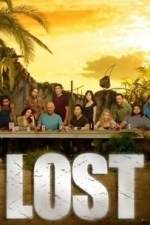
Lost - Season 1
TV Season Watch
Oceanic Air flight 815 tore apart in mid-air and crashed on a Pacific island, leaving 48 passengers...
Acanthea Grimscythe (300 KP) rated Highwayman in Books
May 16, 2018
It's a bit hard for me to really talk about how I felt while reading Highwayman by Craig Saunders. To some extent, I feel that I may not know as much about old lore and mythology as I thought I did - and that's definitely a possibility. The concept behind the book is intriguing, but there are many elements of Saunders story that failed to satisfy me.
In the wake of a plane crash, Karl Goodman finds himself in-between life and death - a sort of limbo that I felt was reminiscent of an episode of Supernatural where Castiel and Dean are fighting vampires in purgatory. I say this largely because of the whole Fog-World/forest atmosphere. In this surreal world, a murderer from centuries past is able to cross the lines between the worlds of the living and dead to continue visiting his reign of horror upon unsuspecting individuals. Guided by the Deans, who appear to be a set of reapers, for lack of a better term (or maybe ferrymen), and a young, comatose girl named Imke, Karl finds himself seeking out this murderous highwayman so that he can exact revenge for his daughter's death.
While I have a strong love for the supernatural and paranormal, I couldn't help but find myself confused more often than not by several aspects of the story. I am, admittedly, ignorant of the White Hart and the Green Man, but I like to think I'm a bit more versed in the many varieties of spooks. In fact, Saunders portrayal of a barrow-wight did not stray unreasonably far from its native draugr. What does baffle me though is how Saunders introduces these supernatural elements into his book. When I received Highwayman, I was expecting something dark and macabre that dealt with... well, with highwaymen. The main villain of the tale is precisely that, but the book itself is largely a ghost story. That isn't necessarily a problem, but it simply did not sit very well with me.
To further complicate the telling of the story, there are far too many differing points of view - five or six, total. (I can't remember if there was a part told from Mr. Dean's perspective.) This makes it hard to keep track of the passage of time, and whether or not that is intentional, I found it bothersome. For instance, at one point Bethany, Karl's wife, does something. Then, for several chapters, the story does not return to her. In fact, the disparity between returning to her point of view was so great that I actually thought that Saunders had forgotten about her.
One of the other issues that bothered me was the circumstances of Karl and Bethany's daughter's death. At first it is explained as a drowning, but then later we learn it was not. Apparently her murder was so horrid that Karl conveniently blocked the tragedy from his mind with a far more "rational" explanation, and to me this felt more like slapping a bandaid on a forgotten plot element than something that was done naturally.
At no point during my reading of this book did I feel any sort of emotion or attachment to any of the characters, and I found that to be extremely disappointing. The cast of Highwayman are not, in any way, extraordinary (well, not depth wise), and that made it harder for me to get into the book.
Overall, I didn't care much for Highwayman; however I will not let that discourage me from reading more of Saunders' work in the future. As part of the DarkFuse Reader's Group, I received an advance copy of this book in exchange for an honest review. I would like to thank DarkFuse, Craig Saunders, and NetGalley for this opportunity.
In the wake of a plane crash, Karl Goodman finds himself in-between life and death - a sort of limbo that I felt was reminiscent of an episode of Supernatural where Castiel and Dean are fighting vampires in purgatory. I say this largely because of the whole Fog-World/forest atmosphere. In this surreal world, a murderer from centuries past is able to cross the lines between the worlds of the living and dead to continue visiting his reign of horror upon unsuspecting individuals. Guided by the Deans, who appear to be a set of reapers, for lack of a better term (or maybe ferrymen), and a young, comatose girl named Imke, Karl finds himself seeking out this murderous highwayman so that he can exact revenge for his daughter's death.
While I have a strong love for the supernatural and paranormal, I couldn't help but find myself confused more often than not by several aspects of the story. I am, admittedly, ignorant of the White Hart and the Green Man, but I like to think I'm a bit more versed in the many varieties of spooks. In fact, Saunders portrayal of a barrow-wight did not stray unreasonably far from its native draugr. What does baffle me though is how Saunders introduces these supernatural elements into his book. When I received Highwayman, I was expecting something dark and macabre that dealt with... well, with highwaymen. The main villain of the tale is precisely that, but the book itself is largely a ghost story. That isn't necessarily a problem, but it simply did not sit very well with me.
To further complicate the telling of the story, there are far too many differing points of view - five or six, total. (I can't remember if there was a part told from Mr. Dean's perspective.) This makes it hard to keep track of the passage of time, and whether or not that is intentional, I found it bothersome. For instance, at one point Bethany, Karl's wife, does something. Then, for several chapters, the story does not return to her. In fact, the disparity between returning to her point of view was so great that I actually thought that Saunders had forgotten about her.
One of the other issues that bothered me was the circumstances of Karl and Bethany's daughter's death. At first it is explained as a drowning, but then later we learn it was not. Apparently her murder was so horrid that Karl conveniently blocked the tragedy from his mind with a far more "rational" explanation, and to me this felt more like slapping a bandaid on a forgotten plot element than something that was done naturally.
At no point during my reading of this book did I feel any sort of emotion or attachment to any of the characters, and I found that to be extremely disappointing. The cast of Highwayman are not, in any way, extraordinary (well, not depth wise), and that made it harder for me to get into the book.
Overall, I didn't care much for Highwayman; however I will not let that discourage me from reading more of Saunders' work in the future. As part of the DarkFuse Reader's Group, I received an advance copy of this book in exchange for an honest review. I would like to thank DarkFuse, Craig Saunders, and NetGalley for this opportunity.
Bob Mann (459 KP) rated The Mummy (2017) in Movies
Sep 29, 2021
Crushingly Mediocre
I’d read the bad reviews, but thought “Hey, it’s Tom Cruise – how bad could it be?” The answer is, “Pretty bad”.
It’s an ominous sign when a film starts with a voice-over (even if done by the sonorous tones of Russell Crowe). Regular readers of this blog will know I generally abhor voice-overs: it invariably belies a belief by the scriptwriters that they think the audience are too damn stupid to join up the plot-dots themselves. Here we portentously walk through the ancient Egyptian backstory of princess Ahmanet (Sofia Boutella, “Kingsman: The Secret Service“; “Star Trek Beyond“) cursed to become the titular Mummy. We then skip forward to the present day and the film settles down, promisingly enough, with scavenging adventurer Nick Morton (Cruise, in Indiana Jones mode), discovering a lost Egyptian temple in war-torn modern-day Mesopotamia that for the sake of the world should have stayed lost.
But after an impressive plane crash (with zero G scenes filmed for real in a “Vomit Comet”) the plot dissolves into a completely incoherent mush. With B-movie lines forcing B-movie acting performances, the film lurches from plot crisis to plot crisis in a similar manner to the comically lurching undead Zombie-like creatures that Ahmanet has sucked the life out of. (After 110 minutes of this, I know how they feel!)
What were actors of this calibre doing in this mess? When I first saw the trailer for this, and saw that Cruise was in it, I thought this felt like an unusual career misstep for the megastar. After seeing the film, I’m even more mystified. Nick Morton is supposed to be an immoral bad guy. Immoral bad guy?? Tom Cruise?? Nope, you lost the audience on that one in the first ten minutes. Cruise, who is STILL only a year younger than I am (damn him, for real!) is still in great shape and must spend ALL his time in the gym. There must be a time soon coming though where he gets to a “Roger Moore in View to a Kill” moment where these action hero roles just no longer become credible anymore.
And what was Russell Crowe, as a famous / infamous (yes, both!) doctor from literature doing in this? His character’s involvement in the plot was almost completely inconsequential. In fact his ‘affliction’ only serves as a coincidental diversion (how convenient!) for bad Mummy-related action to happen. His character has no backstory and seems to serve only as a backbone for Universal’s “Dark Universe” franchise that this movie is supposed to launch. (Good luck with that Universal after this stinker!) Surely it would have made more sense to have the first film in the series to be the origins story for Crowe’s character and the organisation he sets up. This would have made far more sense.
Annabelle Wallis, who is sweet and “only” 22 years his junior, plays Cruise’s love interest in the film and equips herself well, given the material she has to play with. However (after “King Arthur: Legend of the Sword“) she must be kicking herself for not picking the ‘right’ summer blockbusters for her CV.
The main culprit here is the plot, which again is mystifying given that the writing team includes David Koepp (“Jurassic Park”; “Mission Impossible”); Christopher McQuarrie (“The Usual Suspects”, “Edge of Tomorrow“) and Jon Spaihts (“Mission Impossible: Rogue Nation“, “Doctor Strange“). A poor script can sometimes be salvaged by a good director, but here we have Alex Kurtzman, who has only one other directing credit to his name. And I’m afraid it shows. All round, not a good day at the office.
Brian Tyler did the music (aside from the Danny Elfman opening “Dark Universe” fanfare) but it comprises what I would term “running and jumping music”, with few discernible leitmotifs for the characters breaking through.
“Was that supposed to be funny?” My wife’s reaction after the film sums up that this really is a bit of a stinker. Best avoided.
It’s an ominous sign when a film starts with a voice-over (even if done by the sonorous tones of Russell Crowe). Regular readers of this blog will know I generally abhor voice-overs: it invariably belies a belief by the scriptwriters that they think the audience are too damn stupid to join up the plot-dots themselves. Here we portentously walk through the ancient Egyptian backstory of princess Ahmanet (Sofia Boutella, “Kingsman: The Secret Service“; “Star Trek Beyond“) cursed to become the titular Mummy. We then skip forward to the present day and the film settles down, promisingly enough, with scavenging adventurer Nick Morton (Cruise, in Indiana Jones mode), discovering a lost Egyptian temple in war-torn modern-day Mesopotamia that for the sake of the world should have stayed lost.
But after an impressive plane crash (with zero G scenes filmed for real in a “Vomit Comet”) the plot dissolves into a completely incoherent mush. With B-movie lines forcing B-movie acting performances, the film lurches from plot crisis to plot crisis in a similar manner to the comically lurching undead Zombie-like creatures that Ahmanet has sucked the life out of. (After 110 minutes of this, I know how they feel!)
What were actors of this calibre doing in this mess? When I first saw the trailer for this, and saw that Cruise was in it, I thought this felt like an unusual career misstep for the megastar. After seeing the film, I’m even more mystified. Nick Morton is supposed to be an immoral bad guy. Immoral bad guy?? Tom Cruise?? Nope, you lost the audience on that one in the first ten minutes. Cruise, who is STILL only a year younger than I am (damn him, for real!) is still in great shape and must spend ALL his time in the gym. There must be a time soon coming though where he gets to a “Roger Moore in View to a Kill” moment where these action hero roles just no longer become credible anymore.
And what was Russell Crowe, as a famous / infamous (yes, both!) doctor from literature doing in this? His character’s involvement in the plot was almost completely inconsequential. In fact his ‘affliction’ only serves as a coincidental diversion (how convenient!) for bad Mummy-related action to happen. His character has no backstory and seems to serve only as a backbone for Universal’s “Dark Universe” franchise that this movie is supposed to launch. (Good luck with that Universal after this stinker!) Surely it would have made more sense to have the first film in the series to be the origins story for Crowe’s character and the organisation he sets up. This would have made far more sense.
Annabelle Wallis, who is sweet and “only” 22 years his junior, plays Cruise’s love interest in the film and equips herself well, given the material she has to play with. However (after “King Arthur: Legend of the Sword“) she must be kicking herself for not picking the ‘right’ summer blockbusters for her CV.
The main culprit here is the plot, which again is mystifying given that the writing team includes David Koepp (“Jurassic Park”; “Mission Impossible”); Christopher McQuarrie (“The Usual Suspects”, “Edge of Tomorrow“) and Jon Spaihts (“Mission Impossible: Rogue Nation“, “Doctor Strange“). A poor script can sometimes be salvaged by a good director, but here we have Alex Kurtzman, who has only one other directing credit to his name. And I’m afraid it shows. All round, not a good day at the office.
Brian Tyler did the music (aside from the Danny Elfman opening “Dark Universe” fanfare) but it comprises what I would term “running and jumping music”, with few discernible leitmotifs for the characters breaking through.
“Was that supposed to be funny?” My wife’s reaction after the film sums up that this really is a bit of a stinker. Best avoided.
Illeana Douglas recommended In a Lonely Place (1950) in Movies (curated)
Bob Mann (459 KP) rated The Magnificent Seven (2016) in Movies
Sep 29, 2021
A Hornery Exit.
As a big fan of the original – a staple of many Bank Holiday afternoons in my youth – I was prepared to be sniffy about this remake and came to the film on my high-horse (I left that tied to the rail outside the cinema by the way). But I was surprised to have my expectations reset.
Possibly on the basis that Trump has been given the Mexican’s a good bashing lately, the villain of the piece in this film is updated from Mexican bandit Calvera to Sacremento based land-snatcher and all round bad-egg Bartholomew Bogue (an expressionless Peter Sarsgaard). After ripping through some of the inhabitants of Rose Creek in a brutal pre-title sequence, widowed sharp-shooter Emma Cullen (Haley Bennett, “The Equalizer”) heads into the West on a recruiting mission for hired guns. She first recruits the bounty hunter Chisholm (sing “Chisum, John Chisum…”… no, sorry different Western) played by Denzel Washington. Washington matches Yul Brynner’s famous black outfit, and unlike Brynner is obviously able to finish off the ensemble naturally!
They recruit another six (who’d have thought it?) including wise-guy gambler Faraday (Chris “Guardians of the Galaxy” Pratt); famed confederate sniper Goodnight Robicheaux (Ethan Hawke); his nifty knife throwing Asian sidekick (but good for the Far East box office) Billy Rocks (Bjung-hun Lee, from Terminator: Genisys); and religious bear-of-a-man Indian-hunter Jack Horne (Vincent D’Onofrio, “Jurassic World”). After trying to whip the incompetent townsfolk into shape, and setting some Home-Alone style surprises, the stage is set for a showdown as Bogue whips up an army to re-take “his” town.
I like classic Westerns, with John Ford’s Rio Bravo being a particular favourite. In my view the problem with many modern Westerns is that they try too hard to shock (Tarentino’s recent “Hateful 8” was a case in point: a promising start ruined by gratuitous over-the-top violence). “The Magnificent Seven” doesn’t make that mistake, and while the squib-master and blood-bag boy are heavily employed throughout, nothing is too excessive: in fact, my view – and I don’t often tend in this direction – is that the censors rather over-egged the UK 12A rating on this one and could have gone with a 12. Director Antoine Fuqua has produced a film that is highly respectful of its heritage: perhaps to the point where many scenes might be deemed to be clichéd. But I personally warmed to that.
Denzel Washington was born to be in a Western like this and the emerging Chris Pratt does his star potential no harm by turning in a stellar performance adding both levity – with some whip-sharp lines – and screen presence in the role made famous by Steve McQueen. (Although no one comes close to the screen presence of McQueen…. Look up “real man” in the dictionary and his picture is there!) Also effective is Ethan Hawke in the nearest thing to the Robert Vaughan character in this film.
Where the adapted script by Richard Wenk and Nik Pizzolatto falters somewhat is in the motivations of the characters, which come across as superficial and unconvincing. (Perhaps “selling” was a whole lot easier in the Old West?) It is even unclear at the end of the film whether the survivors (and I hate to be the bearer of bad news, but the seven don’t all make it!) actually take their payment, or even a “share of the gold” that the town is sitting on. It makes for an unsatisfactory closure. The degree of racial harmony present in the film is also difficult to buy into, and the script could have made something more of this.
The film soundtrack marks the swan-song of the late James Horner, so tragically killed in a plane crash last year at the age of just 61. As the natural successor to the great John Williams and the late Jerry Goldsmith, Horner’s loss was a terrible one. The film is dedicated to him. Although the soundtrack was completed by Simon Franglen, there are flourishes of classic Horner, most notably in the first Rose Creek showdown scene. There is also a treat to the ears over the closing credits which is very welcome.
Although the film draws natural comparison with its 5* classic predecessor, this is a good film in its own right – a genuinely pleasant surprise. Perhaps its done well enough that we might get to now see a remake of “The Return of the Seven”. I hope so… “the Western is dead… long live the Western”!
Possibly on the basis that Trump has been given the Mexican’s a good bashing lately, the villain of the piece in this film is updated from Mexican bandit Calvera to Sacremento based land-snatcher and all round bad-egg Bartholomew Bogue (an expressionless Peter Sarsgaard). After ripping through some of the inhabitants of Rose Creek in a brutal pre-title sequence, widowed sharp-shooter Emma Cullen (Haley Bennett, “The Equalizer”) heads into the West on a recruiting mission for hired guns. She first recruits the bounty hunter Chisholm (sing “Chisum, John Chisum…”… no, sorry different Western) played by Denzel Washington. Washington matches Yul Brynner’s famous black outfit, and unlike Brynner is obviously able to finish off the ensemble naturally!
They recruit another six (who’d have thought it?) including wise-guy gambler Faraday (Chris “Guardians of the Galaxy” Pratt); famed confederate sniper Goodnight Robicheaux (Ethan Hawke); his nifty knife throwing Asian sidekick (but good for the Far East box office) Billy Rocks (Bjung-hun Lee, from Terminator: Genisys); and religious bear-of-a-man Indian-hunter Jack Horne (Vincent D’Onofrio, “Jurassic World”). After trying to whip the incompetent townsfolk into shape, and setting some Home-Alone style surprises, the stage is set for a showdown as Bogue whips up an army to re-take “his” town.
I like classic Westerns, with John Ford’s Rio Bravo being a particular favourite. In my view the problem with many modern Westerns is that they try too hard to shock (Tarentino’s recent “Hateful 8” was a case in point: a promising start ruined by gratuitous over-the-top violence). “The Magnificent Seven” doesn’t make that mistake, and while the squib-master and blood-bag boy are heavily employed throughout, nothing is too excessive: in fact, my view – and I don’t often tend in this direction – is that the censors rather over-egged the UK 12A rating on this one and could have gone with a 12. Director Antoine Fuqua has produced a film that is highly respectful of its heritage: perhaps to the point where many scenes might be deemed to be clichéd. But I personally warmed to that.
Denzel Washington was born to be in a Western like this and the emerging Chris Pratt does his star potential no harm by turning in a stellar performance adding both levity – with some whip-sharp lines – and screen presence in the role made famous by Steve McQueen. (Although no one comes close to the screen presence of McQueen…. Look up “real man” in the dictionary and his picture is there!) Also effective is Ethan Hawke in the nearest thing to the Robert Vaughan character in this film.
Where the adapted script by Richard Wenk and Nik Pizzolatto falters somewhat is in the motivations of the characters, which come across as superficial and unconvincing. (Perhaps “selling” was a whole lot easier in the Old West?) It is even unclear at the end of the film whether the survivors (and I hate to be the bearer of bad news, but the seven don’t all make it!) actually take their payment, or even a “share of the gold” that the town is sitting on. It makes for an unsatisfactory closure. The degree of racial harmony present in the film is also difficult to buy into, and the script could have made something more of this.
The film soundtrack marks the swan-song of the late James Horner, so tragically killed in a plane crash last year at the age of just 61. As the natural successor to the great John Williams and the late Jerry Goldsmith, Horner’s loss was a terrible one. The film is dedicated to him. Although the soundtrack was completed by Simon Franglen, there are flourishes of classic Horner, most notably in the first Rose Creek showdown scene. There is also a treat to the ears over the closing credits which is very welcome.
Although the film draws natural comparison with its 5* classic predecessor, this is a good film in its own right – a genuinely pleasant surprise. Perhaps its done well enough that we might get to now see a remake of “The Return of the Seven”. I hope so… “the Western is dead… long live the Western”!
